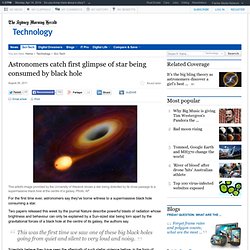

Explore Nature& Air Resources Division-Natural Lightscapes. The darker the sky, the more stars can be seen.

The following simulated images depict how the constellation Orion appears under various sky conditions. Images are courtesy of GLOBE at Night. SolarBeat. Hires.jpg from harvard.edu. Chromoscope - View the Universe in different wavelengths. 30 Most Amazing NASA Pictures – Tribute. In T-20 minutes, the last space shuttle, Atlantis will launch into outer space.

And with that, Nasa will come to its journeys end. A long journey. One with both ups and downs. The-Brightness-of_the-Sun_1600-1200.jpg (1600×1200) Why Does the Sun Look So Weird and Beautiful In this Photo? Astronomy stories - Gizmodo. Astronomers See First Evidence. This artist's image provided by the University of Warwick shows a star being distorted by its close passage to a supermassive black hole at the centre of a galaxy.

Photo: AP For the first time ever, astronomers say they've borne witness to a supermassive black hole consuming a star. Two papers released this week by the journal Nature describe powerful blasts of radiation whose brightness and behaviour can only be explained by a Sun-sized star being torn apart by the gravitational forces of a black hole at the centre of its galaxy, the authors say. This was the first time we saw one of these big black holes going from quiet and silent to very loud and noisy.